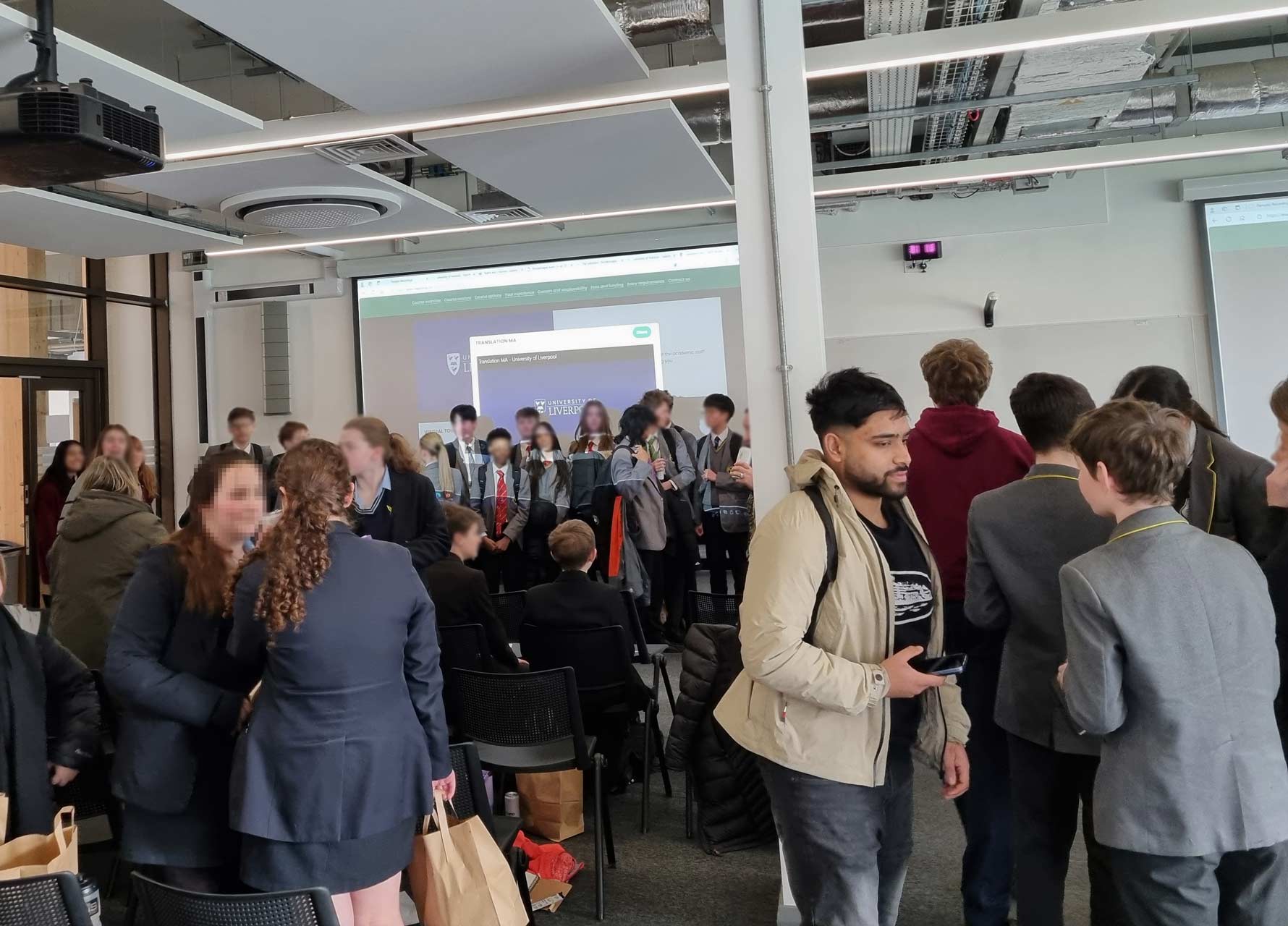Activities
As part of our ongoing project, we are excited to collaborate with four different secondary schools in the Merseyside area to explore how semiotics plays a role in the de/construction of borders within school environments.
These schools, including one all-girls school and three co-educational institutions, are spread across Liverpool and its surrounding areas, offering us a unique opportunity to gain a diverse range of perspectives across different educational settings.
Our collaboration focuses on working closely with Modern Foreign Language teachers and their students in Years 8-9. Throughout our visits, we run a series of co-creation activities where students take on the role of research assistants, investigating the semiotic landscapes of their schools. Together, we analyse how language, imagery, and the physical environment shape students’ understanding of and connection to the natural world.
The final stage of this programme invites students to create artefacts that reflect their relationship with nature, drawing from their linguistic and cultural backgrounds. It has been an absolute pleasure to witness the creativity of the students, who have produced heartfelt poems, catchy song lyrics, and stunning drawings. These artefacts will soon be featured in a digital exhibition, showcasing the students’ work and their unique perspectives. Stay tuned for more updates in the coming months!

Celebratory event with schools
On Friday 24 January 2025 we held an event with four Liverpool secondary schools to celebrate the successful completion of the Engagement aspect of the Borderscapes project.
It was really uplifting to see how students had deeply engaged with notions of the border, and particularly with perceptions of the border between the natural and the non-natural world from an urban perspective. Focusing on the centrality of language in doing and undoing borders around us, during the event we discussed the significance of this collaboration between the University and local schools, the feedback from students, and ideas for a desirable continuation of the project.
Students worked in groups and shared what they had learned from the project, offered ideas for future collaborations, and recited self-authored poems. It was extraordinary to see how much thinking students had put into bordering issues, and how much time they had devoted to creating drawings, poems and lyrics reflecting personal and collective engagement with aspects of nature, identity and participation.

All the students’ artefacts were showcased in an illuminating and moving online exhibition showcasing rich imaginations and composing a visual and auditory display of an outstanding collective effort to articulate personal connections with urban nature.
Another outcome of the collaboration is the creation of a Languaging Wiki, a live and interactional place for networking and knowledge exchange for teachers. The Wiki will remain openly accessible for ongoing development, and we hope that interested teachers will keep contributing.
We are particularly grateful to the students for their inspiring contributions, and to their Modern Languages teachers for dedicating their time to the project in addition to a very busy schedule. In particular, many thanks to:
- Scott Davenport and Lucy Irving, and their students at Archbishop Blanch Secondary School for Girls
- Rebecca Kenehan and her students at Chesterfield High School
- Michelle Dempsey and Amy Yorke, and their students at North Liverpool Academy
- Simon Baron and Stephanie Davidson, and their students at St Margaret’s Academy
Our collective appreciation goes to Mike Bayliss and Sam Gill for sharing their knowledgeable insights about the Newton Interpreting Suite and the Sydney Jones Library, and to the HLC School Marketing Team for their support while organising the event.
Prof. Stefania Tufi would like to thank the fantastic Team that she had the privilege to work with. Heartfelt thanks to (PDRA) Dr Jessica Hampton, for creating the Languaging Wiki and for providing exemplary leadership in the Engagement section of the Borderscapes project; to UG students Jessica Dowd, Isobel Griffiths, Priya Lad and Rufus Read, who delivered the workshops in the schools and developed such a positive relationship with everybody in the classrooms; and to PGR students Emily Kearon-Warrilow, who looked after our online presence and created a fantastic online exhibition, and Wendy O’Neil, who identified the main themes for the exhibition through a careful and sensitive approach to the pupils’ artefacts. You were all absolutely great!